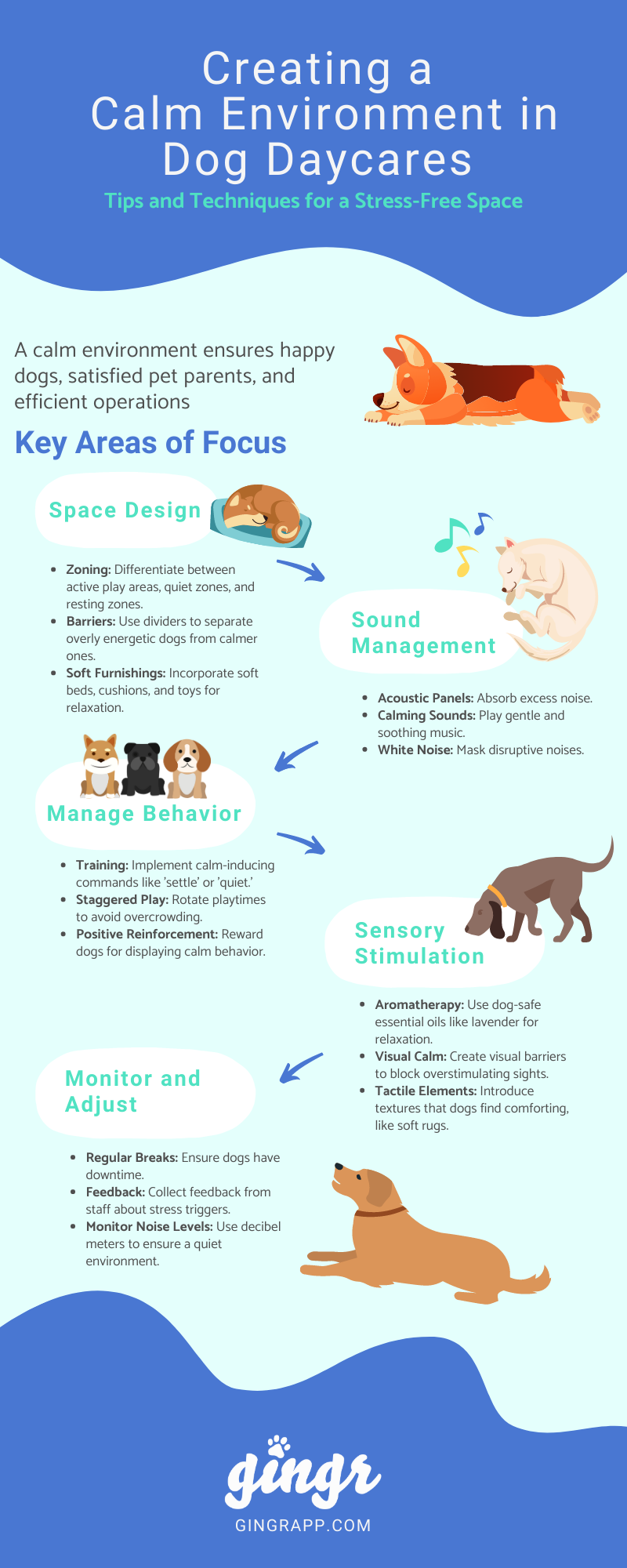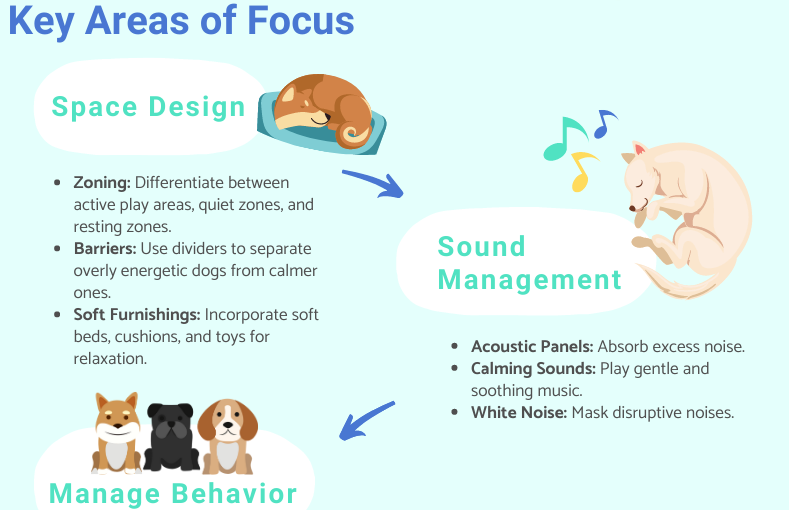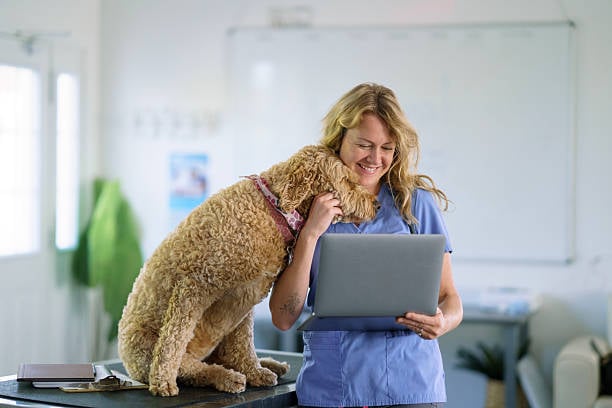Running a dog daycare is a delightful and rewarding experience, but it can also come with its fair share of challenges, one of which is ensuring a calm and serene environment. With our bustling furry friends around, how can we create a space that feels peaceful for both the dogs and the caregivers? We've crafted an informative infographic, and in this accompanying blog post, we'll delve deeper into those tips and techniques.

Space Design: The Foundation of Calm
The layout and design of your daycare play a pivotal role in setting the tone for behavior.
- Zoning: Different areas for different activities can work wonders. Designate separate spaces for play, relaxation, and quiet time. This way, dogs can shift from one zone to another based on their mood and energy levels.
- Barriers: Not all dogs have the same temperament. Using dividers can help separate the more exuberant canines from those that prefer a more laid-back experience.
- Soft Furnishings: Just like us, dogs appreciate a soft spot to lie down. Introduce plush beds, cushions, and toys to provide comfort and tranquility.
Sound Management: A Symphony of Serenity
Controlling sound is paramount to a peaceful daycare.
- Acoustic Panels: These can be strategically placed to absorb and diminish noise, making the environment more conducive to relaxation.
- Calming Music: Various studies suggest that certain tunes can have a calming effect on canines. Soft, ambient music or classical pieces can be particularly soothing.
- White Noise: In areas where barking might become disruptive, white noise machines can help mask those sounds, creating a consistent auditory backdrop.
Behavior Management: Fostering Peaceful Pups
Promote calm behaviors among the dogs in your care with these techniques:
- Training: Regularly train and reinforce commands that promote calmness. This could be as simple as teaching the dogs to "settle" on command.
- Staggered Play: Overcrowding can lead to heightened energy and potential confrontations. By staggering playtimes, you give each dog ample space to play without feeling overwhelmed.
- Positive Reinforcement: A treat or a gentle pat can do wonders. Reward calm behavior consistently to reinforce it.
Sensory Stimulation: Engaging the Senses
Dogs, like humans, respond to their environment. Using sensory cues can significantly influence their mood.
- Aromatherapy: Certain dog-safe essential oils, like lavender, have been shown to have a calming effect when diffused in the air.
- Visual Calm: Sometimes, blocking a dog's view of an overstimulating sight, like passing cars or pedestrians, can reduce anxiety.
- Tactile Elements: Introduce comforting textures such as soft mats or plush toys that dogs can cuddle with.
Maintenance and Monitoring: Keeping the Peace
Routine checks and feedback can help maintain a serene environment.
- Regular Breaks: Much like kids, dogs need downtime. Ensure they get regular breaks to rest and rejuvenate.
- Feedback: Encourage your staff to provide feedback on what's working and what might be potential stress triggers.
- Monitor Noise Levels: A simple decibel meter can be a valuable tool. Keep an eye on noise levels and adjust accordingly.
Creating a calm environment in a dog daycare is about understanding and catering to the needs of our furry friends. By combining thoughtful design, sound management, behavior techniques, sensory cues, and regular monitoring, we can foster a space where dogs feel safe, calm, and utterly at home.
Did you know Gingr pet-care software can make managing your business easier, while also providing a better customer experience? Sign up for a demo with Gingr now!
Subscribe to the Gingr Blog






